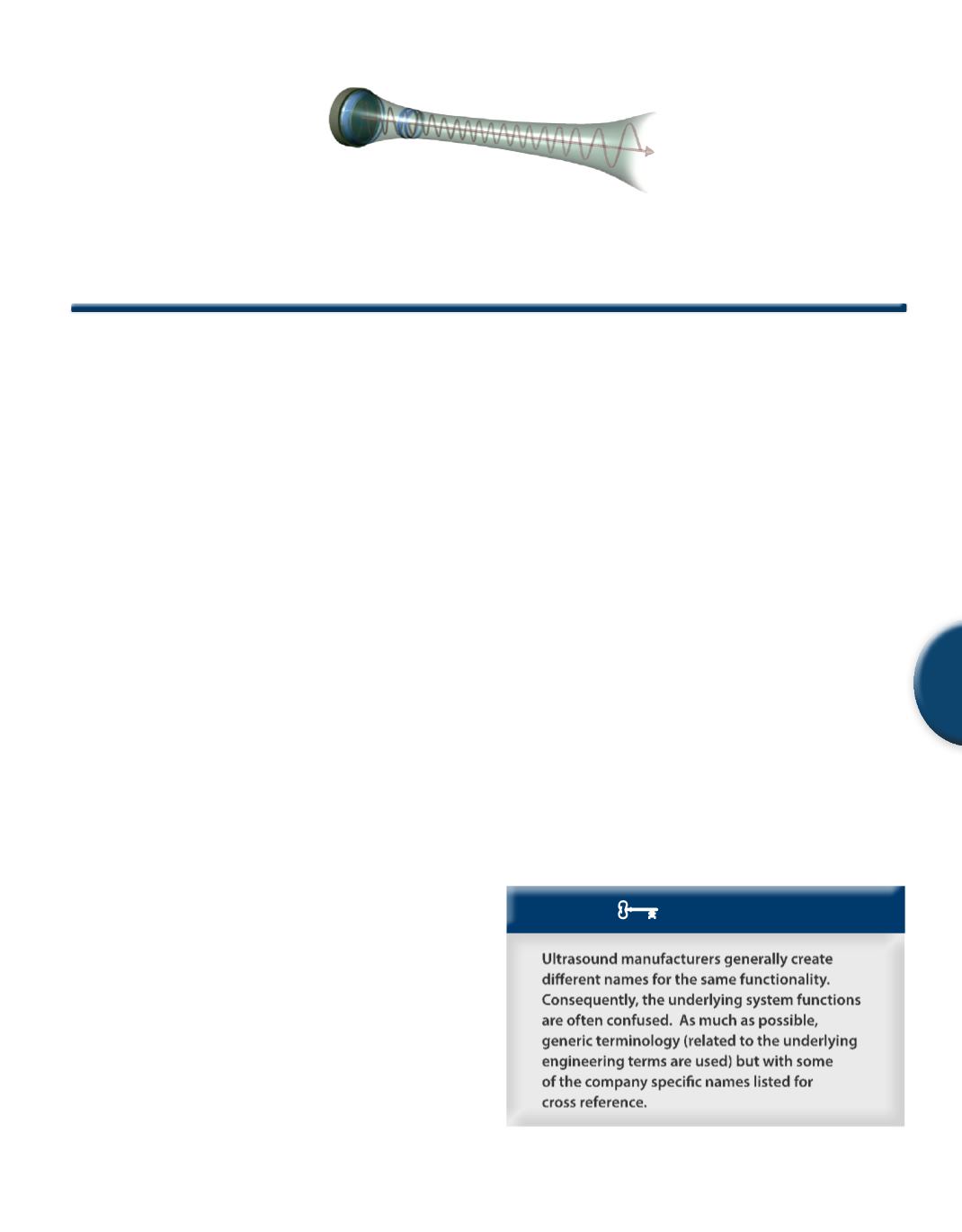
Chapter 6: System Operation
147
6
Introduction
Inmany ways this chapter is really two chapters joined by a common
purpose. Level 1 focuses on the basic functions of an ultrasound
machine while simultaneously concatenating all of the material
in the earlier chapters into one cohesive topic. Level 2 deals with
systemoperation from the standpoint of user interaction and higher
level functions. Level 1 is designed to teach the basics of what an
ultrasound system must do to make an image. Level 2 is designed
to teach the basics of what the sonographer needs to do with the
system and the choices faced to make an image.
One of the greatest difficulties of writing a chapter that specifically
relates the physics, the system controls, the clinical advantages and
disadvantages, and the theory is the lack of consistent terminology
from one ultrasound provider to the next. The same basic function
on systemAwill most likely have a very different name than the exact
same technology on systemB. This discrepancy in naming presents
a problem since not everyone uses the same system. As much as pos-
sible, I have attempted to use generic, yet descriptive names for the
system functions, only using a specific manufacturer’s name when
there is no other competing technology, when the name used by a
specific company leads to a more “intuitive” understanding of the
technique, or because the name itself has become a standard (like
the use of the word Kleenex in reference to a disposable facial tissue).
1. The Basic Processes of Real-Time Imaging
There are six core functions that an ultrasound system must
perform:
1. Transmit beams
2. Receive beams
3. Process the returned data
4. Perform measurements on the processed data
5. Display the processed data
6. Store the processed data
Of course each of these core functions can be further dissected into
processes, and those processes again subdivided. Remembering
that this is a physics book for ultrasound application and not an
engineering document or physics treatise, we will spare discussion
of specific electronic detail when there is no relevance in the clinical
world. As such, we will not have a specific need to subdivide these
processes very often within this chapter.
In the following sections, we will discuss each of these functions as
an integral part of creating an image. The process of discussing the
core functions will force us to integrate the material from the previ-
ous five chapters. To assist us with this task,we will start by learning
related terminology and definitions, followed by a functional block
diagram, relaying the links of each chapter to the current topic.
KEY CONCEPT
SystemOperation
Chapter 6


